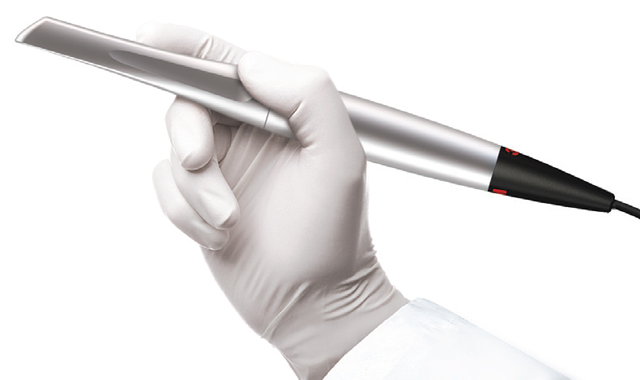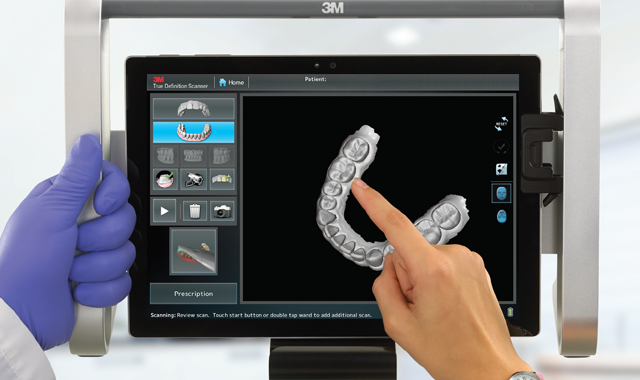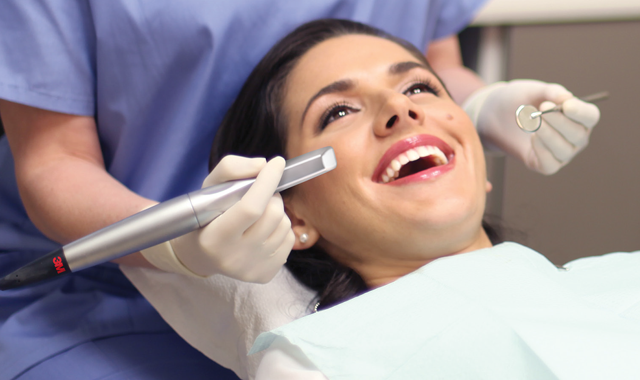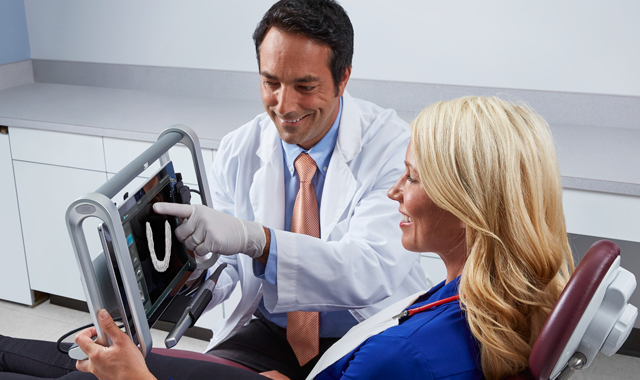[SPONSORED] What you need to know about intraoral scanning
A more in-depth look at intraoral scanner technologies.

There are two main scanning technologies utilized in digital scanning systems today: laser scanning and video scanning.
Though you don’t need to be a Ph.D. in the subject, it is important for oral care professionals to understand the basics behind each technology in order to make the best possible decision on a system for the practice.
At their core, what are these technologies really doing? They’re capturing the oral anatomy. In order to do that, it is first necessary to apply a pattern to the tooth so the scanner can trace its contours. There are two main ways to apply these patterns:
- Laser scanning: Pattern comes from a laser beam projected on the tooth surface
- Video scanning: Pattern is applied with a light coating of scanning spray
Maybe you’re asking yourself, “What difference does the technology make anyway? Aren’t both still capturing a digital impression?”
Let’s examine three important ways that a single difference in technology can have in making all the difference with your intraoral scanning experience!
Click through the slides to learn more about intraoral scanners.


Difference #1: Accuracy
When it comes to impression taking, clearly the most important aspect is the quality of the outcome. Dental professionals and labs rely on accurate impressions in producing restorations that fit in the mouth the way they are intended, with minimal adjustments. Not only do you want accuracy, but also precision-a digital scanning system that hits the mark and keeps hitting it again and again.
With a laser, the pattern is always moving. It’s like trying to hit a moving target.
By using scanning spray, the pattern of a video scan is fixed, providing more consistently accurate detail than other laser scanning intraoral scanners. This technology is similar to that used by Hollywood in “motion capture” movie effects.



Difference #2: Wand size
The size of a scanning wand can have a significant effect on both patient and practitioner. For the dental professional, a lighter-weight, small wand is preferable for ease of use and in reaching difficult areas of the mouth. For the patient, a small wand tip offers comfort benefits.
Laser scanning wands must be relatively large to accommodate the necessary electronics and optics.
Video scanning removes the laser, thus eliminating bulk, enabling the potential for more compact wand designs.



Difference #3: Affordability
Like many technologies, as time has passed costs have decreased for digital scanners; however, some scanning systems still remain at a price point that is unattractive to many dental professionals. The good news is that dental professionals have choices, and there are options that do not present a significant financial barrier-such as the $16,995 cost of a 3MTM Mobile True Definition Scanner.
The complicated optics used in laser scanners are expensive, and not used in consumer electronics-so they cannot leverage the economies of scale made possible by mass production. This typically leads to more expensive costs.
As an example of a video scanner, the 3MTM True Definition Scanner uses a number of “off-the-shelf” components found in today’s more advanced consumer electronics, such as cameras and mobile devices. Because these component are mass-produced, the price of this system is one of the lowest on the market.



Bonus: Additional considerations
1. Patient engagement
Having already covered the benefit of a smaller wand for patient comfort, we now turn to the overall patient experience. A compact, ergonomic design similar to rechargeable tablets that patients and clinicians use in their daily lives could help make patients more comfortable with the experience. Informed discussion and visual patient communication could be made easy with a system that can be placed directly into the hands or lap of a patient, where they can experience a cutting-edge digital visualization of their oral anatomy, and ultimately, a better understanding of proposed treatments.
2. User experience
Imagine the ease of a tablet-based system that allows clinicians to move freely between operators without power cords or carts. Additionally, flexible mounting options could help to minimize workspace clutter, offering more space for the clinician and assistant to maneuver in small spaces.
3. Clinical options
If you appreciate flexibility, an open and secure cloud-based platform that lets dental professionals easily share files and connect with laboratories and other partners, the 3MTM True Definition Scanner is a good choice. Some digital scanners are designed to connect with mills and other systems-now and into the future. This flexibility means that dentists can work with their existing labs to prescribe the best material solution for the desired outcome.
Copy and images provided by 3M Oral Care.
